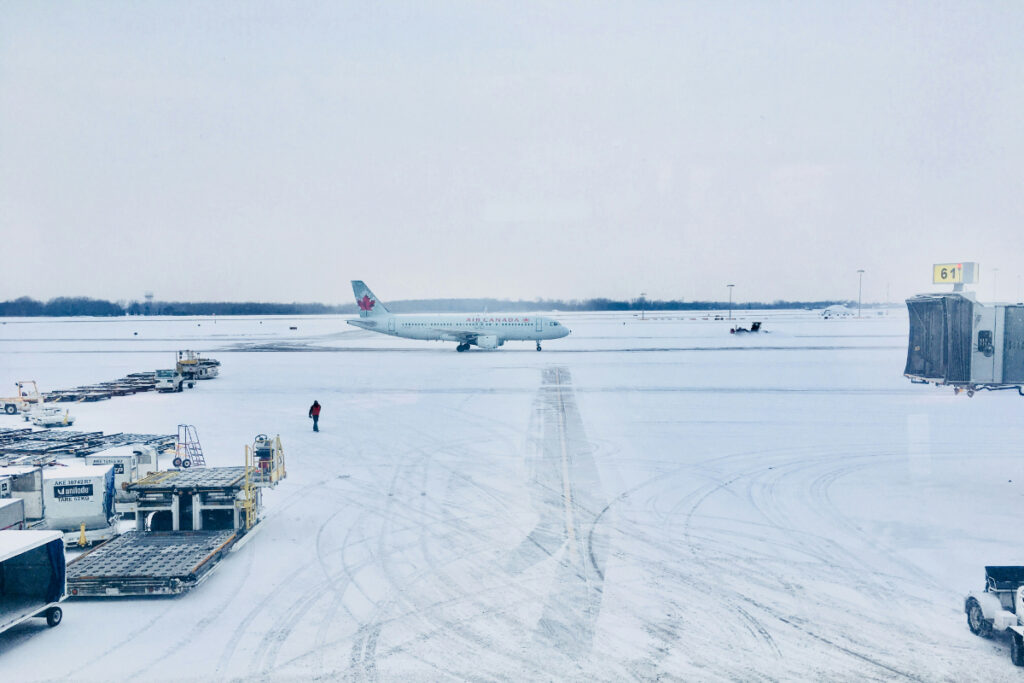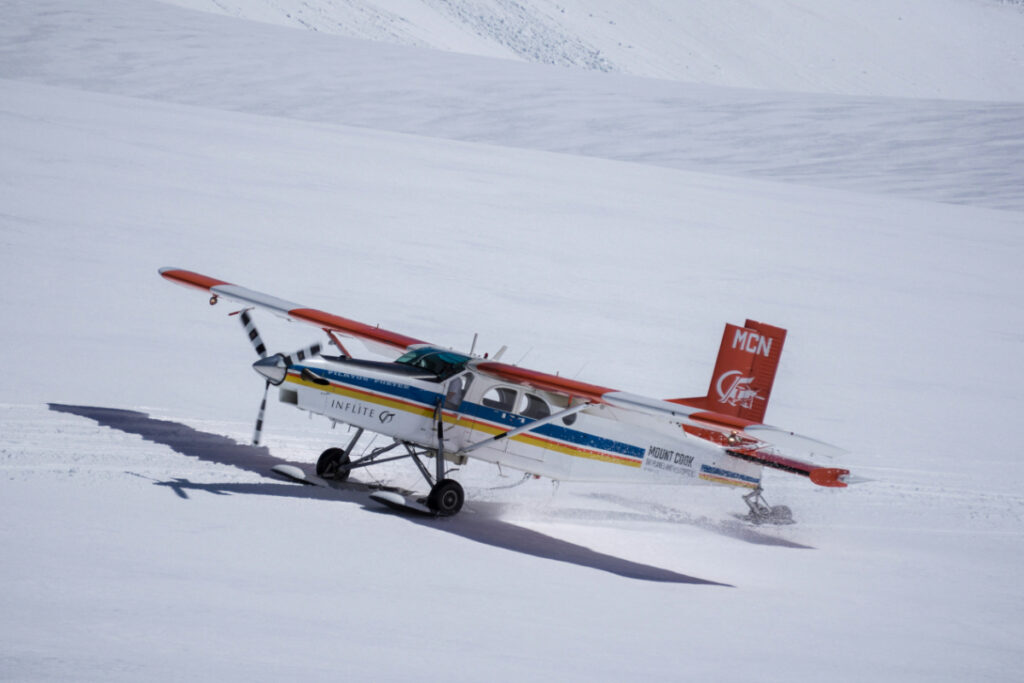Feasibility of Aircraft Landing in Snow
When it comes to landing an aircraft in snow, it is important to consider the feasibility of such an operation. While it is possible for planes to land on snow-covered runways, it is not always the safest or most practical option.
One of the biggest challenges of landing in snow is the reduced visibility. Snow can create a whiteout effect, making it difficult for pilots to see the runway and navigate the aircraft safely. In addition, snow can also accumulate on the wings and fuselage, affecting the aerodynamics of the aircraft and making it harder to control.
Another factor to consider is the condition of the runway itself. Snow and ice can create a slippery surface, reducing the amount of friction between the wheels and the ground. This can make it harder for the aircraft to slow down and stop once it has landed. However, some planes are equipped with special features such as skis or de-icing equipment that can help them land safely on snow or ice-covered runways.
It is also worth noting that landing in snow requires a higher degree of skill and experience from the pilot. Pilots must be trained to handle the unique challenges of landing in snowy conditions, including reduced visibility, slippery runways, and the effects of snow on the aircraft’s performance.
Overall, while it is possible for planes to land in snow, it is not always the best option. Pilots must carefully evaluate the conditions and weigh the risks before attempting to land in snowy conditions.

Preparation and Safety Measures
When it comes to flying in snowy conditions, preparation and safety measures are crucial. Before takeoff, the runway must be cleared of snow and ice to ensure safe landing. This involves a combination of runway deicing procedures and aircraft deicing techniques.
Runway Deicing Procedures
Runway deicing procedures involve the use of deicing fluids to remove snow and ice from the runway surface. The fluids are usually a mixture of water and glycol, which are sprayed onto the runway surface using special equipment. The deicing fluids break down the bond between the snow or ice and the runway surface, allowing it to be easily removed. It is important to note that the runway must be re-treated with deicing fluids if the snow or ice starts to build up again.
Aircraft Deicing Techniques
Aircraft deicing techniques involve the use of deicing fluids to remove snow and ice from the aircraft. The fluids are usually a mixture of water and glycol, which are sprayed onto the aircraft using special equipment. The deicing fluids break down the bond between the snow or ice and the aircraft surface, allowing it to be easily removed. It is important to note that the aircraft must be re-treated with deicing fluids if the snow or ice starts to build up again.
In addition to deicing, there are other safety measures that must be taken when flying in snowy conditions. For example, pilots must be trained to handle the reduced visibility and slippery conditions that come with snow and ice. They must also be aware of the weight restrictions that come with carrying extra deicing fluids on board.
Overall, preparation and safety measures are key when it comes to landing a plane in snow. By following proper deicing procedures and techniques, and taking other safety measures, pilots can ensure a safe landing even in the most challenging winter weather conditions.
Pilot Considerations During Snow Landings
When landing a plane in snow, pilots must consider several factors to ensure a safe landing. These factors include visibility challenges and the usage of instrument landing systems.
Visibility Challenges
Snow can significantly reduce visibility, making it difficult for pilots to see the runway. In some cases, visibility can be reduced to zero, making it impossible for pilots to land visually. To overcome this challenge, pilots use instrument landing systems (ILS) to guide the plane to the runway.
Instrument Landing Systems Usage
ILS uses radio signals to guide the plane to the runway. The system provides both lateral and vertical guidance, ensuring that the plane is on the correct path to the runway. Pilots use the instrument panel to follow the ILS signals, which helps them to land the plane safely even in low visibility conditions.
In addition to ILS, pilots must also consider the runway conditions. If the runway is covered in snow, the plane may experience aquaplaning, which can make it difficult to stop the plane after landing. To avoid this, pilots must ensure that the runway is clear of snow and ice before landing.
Overall, landing a plane in snow requires careful consideration of several factors. By using ILS and ensuring that the runway is clear of snow, pilots can safely land the plane even in challenging weather conditions.
Aircraft Equipment for Snowy Conditions
When it comes to landing in snowy conditions, aircraft have specialized equipment to ensure safe operation. Here are some of the key pieces of equipment that help planes land in the snow:

1. Deicing Systems
Before takeoff, aircraft undergo a thorough deicing process, which removes ice and snow from the plane’s surface. This is important because ice and snow can affect the aerodynamics of the aircraft and cause issues with lift. Deicing systems use a combination of hot air and/or chemicals to melt the ice and snow, ensuring a safe and steady flight.
2. Anti-Skid Systems
Aircraft use an anti-skid system (similar to the one found in a car) to allow the pilots to maintain control in icy conditions. This system helps prevent the wheels from locking up and sliding on the runway, which could cause the plane to skid off the runway.
3. Anti and Deicing Systems on Wings
The aircraft also has various anti and deicing systems, such as heated panels on the wings. These systems prevent ice from forming on the wings, which could affect the plane’s ability to generate lift.
4. Skis
Some planes even have skis to land on snow or ice. These skis are similar to those found on a snowmobile or ski-plane and allow the aircraft to land on snow-covered runways.
Overall, the combination of deicing systems, anti-skid systems, anti and deicing systems on wings, and skis, allow planes to safely operate in snowy conditions. While landing in the snow can be challenging, modern aviation has developed methods to tackle this challenge, ensuring safe and steady flights.
Airport Snow Removal and Management
When it comes to winter weather conditions, airports have to be prepared to handle snow and ice on the runways. Snow and ice can cause significant safety hazards for planes during takeoff and landing. Therefore, airport authorities must have a comprehensive snow removal and management plan in place to ensure that aircraft can safely land and take off.
One of the primary methods of snow removal is plowing. Airport authorities use specialized plows to clear the runways of snow. These plows are equipped with large blades that can remove snow quickly and efficiently. Additionally, some plows are designed to remove snow from the runway without damaging the pavement.
Another method of snow removal is the use of deicing agents. Deicing agents are chemicals that can melt snow and ice on the runway. These agents are typically sprayed onto the runway before takeoff or landing to ensure that the runway is clear of snow and ice. However, deicing agents can be harmful to the environment, so airport authorities must use them sparingly.
In addition to snow removal, airport authorities must also manage the snow that accumulates on the airport grounds. This includes managing the snow piles that are created during snow removal. These piles can obstruct the view of pilots and create safety hazards. Therefore, airport authorities must ensure that the snow piles are located in areas that do not obstruct the view of pilots.
Overall, airport snow removal and management is a critical aspect of aviation safety. By having a comprehensive plan in place, airport authorities can ensure that aircraft can safely land and take off during winter weather conditions.
